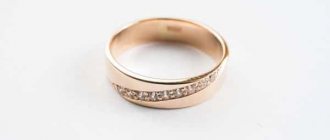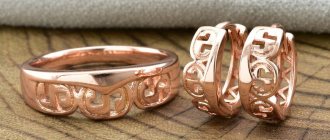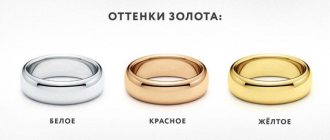How is a crown installed? process description
There are certain stages of installing the product on the tooth.
- First of all, the preparatory process is carried out. It is to cure the tooth. For example, treatment of pulpitis, canal filling, etc.
- After which the tooth is turned on all sides. This procedure is necessary for the crown and is performed after pain relief.
- The next step is taking an impression; an impression is made of both jaws. Then a mock-up of the plaster crown is made.
- A plastic cover is placed on the ground tooth. This is necessary to provide protection from the external environment.
- After the crown is ready, it is tried on.
- Installing a crown on a tooth using cement.
There are no special restrictions after the manipulation. It is recommended to take care of it during the first three days, namely not to expose it to sudden temperature changes. You should also limit yourself from eating hard foods that require chewing effort.
Recovery and rehabilitation
Once the dental crowns are installed, you can lead a normal life. It is allowed to eat and drink immediately, unless the doctor warns otherwise (this depends on the type of cement with which the crown was fixed).
During the first days, it is advisable to refrain from eating hard foods, as you may bite your tongue, cheek, or lip.
After installing dental structures, problems may arise when using them:
- Feeling of discomfort, as well as increased sensitivity of the tooth. Sensitivity will begin to increase immediately after the anesthesia wears off. If the dental nerve was not depulped during prosthetics, the tooth may be sensitive to cold or hot. In this case, the dentist will recommend brushing your teeth with a special toothpaste for sensitive teeth.
- A feeling of pain when biting indicates that the dental crown is set high. This problem can be easily fixed.
- If the patient has parafunction of the masticatory muscles, the doctor will make a night guard.
- There may be leaching of cement from under the crown and its weakening. This creates favorable conditions for the development of infection under the crown and the further development of caries.
- Due to improper fitting or decementing, the crown may fall out.
How are gold teeth made?
According to the manufacturing method, they can be:
Stamped ones, as you might guess from their name, are made from standardized stamps - blanks. Their sizes are adjusted immediately before fixation in the dentition with dental cement mortar. Cast versions of prostheses are created separately - they are cast from gold using wax casts made in advance.
What type of gold is used and how much does one crown cost? The answer is simple: gold is used from the 850th to the 900th standard. But often prostheses do not consist of pure metal, but of its alloy with copper and silver, which allows the prosthesis to be stronger. On average, the price per gram is about two thousand rubles. The entire dental crown will cost from ten thousand rubles. To compare prices, you can give the following table:
| Crown type | Prices (in rubles) |
| Gold prosthesis for one tooth | From 10000 |
| Metal-ceramic prosthesis (gold-based) | From 17000 |
| Zirconium dioxide design | From 13000 |
| Porcelain prosthesis for anterior tooth | From 16000 |
We suggest that you familiarize yourself with Levomekol after tooth extraction
What kind of gold is used to make prosthetics?
What standard of gold is used for dental crowns, and what are they made of? In dentistry, pure metal is rarely used - as a rule, the alloy also contains silver and copper. There are alloys with the addition of platinum or palladium. The fineness depends on the percentage of gold component in the product, which also determines its scope of application.
| Try | Gold content (%) | Where is it used? | Peculiarities |
| 916 | 91,6 | Used for the manufacture of inlays, single dentures, bridges | Has high corrosion resistance and hardness, easy to process |
| 900 | 90,0 | Same as in the previous version | Same as 916, but with greater hardness |
| 750 | 75,0 | In the manufacture of individual parts of removable dentures (clasps, hooks). Also suitable as solder for high grade elements | Has a low melting point |
| 583 | 58,3 | It is the basis for pins and other individual parts | Characterized by low corrosion resistance |
You can often hear the question: how much does a gold crown weigh on a tooth? The weight of the product is determined by its size, wall thickness, and degree of wear. On average, the weight of the structure ranges from 0.3-2 g. The product, which consists of several gold teeth in a row, can weigh up to 9-10 grams.
Features of crown manufacturing
But the manufacture of prostheses also requires certain conditions. The most important thing is the correct selection of the metal sample. Both the survival rate and the hardness of the substance depend on this indicator. Gold itself is a soft metal; if you use 999 grade in dentistry, it will not last long. Such a sample is easily deformed when bitten, and also quickly wears off. Its cost is also too expensive for the average person.
But if you take a low-grade alloy, it will also not work, since there are requirements for the alloy. If there is too much ligature, its ions gradually accumulate in the body and cause side effects. Local metallosis (accumulation of metal in the gums and adjacent teeth) may develop. And also certain alloys, for example, zinc and nickel, cause allergic reactions and blackening of neighboring areas. And some alloys can be carcinogenic.
Dental crowns are made to order in specialized dental clinics. Their cost will depend on the dollar exchange rate, which changes daily. This is explained by the fact that banks supply the precious metal to clinics. In particular, this service is offered by Sberbank of Russia.
Dental technicians shape the ingots and add the ligature. By the way, a sample can be found on some of them. The crown itself consists of a disk, as well as an upper part made of gold.
We invite you to familiarize yourself with White plaque in the socket after tooth extraction - Healthy life
Since such a crown is completely unaesthetic, the cost of its installation is low. Dentistry is the only place where the cost of ceramics is higher than precious metals. There are several manufacturing methods:
- Stamping. These are the so-called fixes. Their advantage is cost. And the disadvantages are expressed in the inconvenience of use, curvature of the bite, loose fit to the gums, which is why inflammatory processes appear.
- Casting. It has an anatomically more correct shape and a tight fit. Although it is also not included in the concept of “esthetic dentistry”.
What it is
Gold crowns are “caps” made of dental gold 900 and placed on the teeth to restore chewing functions. They can be used to correct the defect of a single tooth, or to replace several missing teeth using a metal bridge.
Gold has been used in dentistry for centuries and this is not an accident. This metal does not cause negative reactions from the body, is not subject to oxidation under the influence of saliva, and does not cause allergic reactions. At the same time, it is quite durable and can withstand even significant chewing loads.
Preparation and installation of gold dental crowns
The process of preparing and manufacturing a prosthesis consists of the following stages:
- First, the tooth is prepared. He needs to be healthy, without caries. If necessary, carry out treatment, replace the filling, if it is old, if the tooth was on a pin, restore it, etc.
- Next, before starting the procedure, the tooth needs to be numbed.
- Now it has to be ground down to place a crown on it. Grind on each side, adjusting to the thickness of the crown being installed. Giving it the required shape, additionally small ledges are made for better fastening.
- After grinding, plaster casts of both the upper and lower dentition are made.
- Using the plaster version, a wax model of the crown is created, and then a gold prototype is cast.
Advantages
Gold crowns have many advantages compared to other materials used for prosthetics:
- full compatibility with soft tissues of the oral cavity;
- the absence of any harmful additives in the alloy - as a result, there is no risk of an allergic reaction, irritation and other unpleasant manifestations on the oral mucosa;
- high strength – for the manufacture of crowns, gold of the highest standard is used, which is resistant to any damage;
- due to the softness of the alloy, antagonist teeth are not injured;
- After prosthetics, almost complete “fusion” of the natural unit and the gold crown occurs.
Advantages and disadvantages of gold teeth
Benefits of gold teeth:
- Durability - they last 15 years or more, especially if properly fitted and installed, they can last 25 years. Technologies for making crowns made of gold have changed; instead of fitting by stamping, computer-aided turning technologies and high-precision casting are now used, which significantly extends their service life and provides the patient with comfortable use.
- There are no chips or cracks, they are easy to chew on, since crowns or dentures are entirely made of metal
- The rate of wear of gold, surprisingly, coincides with the rate of wear of tooth enamel. Therefore, antagonist teeth will not suffer from contact with such dentures and will not be destroyed or deformed by them.
- The metal has strong bactericidal properties
There are practically no disadvantages to gold teeth, except for aesthetics. They do not look like natural teeth, so it is not at all fashionable to place them in the smile area.
Gold does not tolerate proximity to amalgam fillings that contain mercury.
Advantages and disadvantages
Positive properties:
- Crowns made of gold are compatible with any body tissue and do not cause allergies or rejection reactions.
- The tissues surrounding such a crown remain healthier, as irritation and sensitivity are minimized.
- Restoring an organ with a crown made of precious metal does not lead to problems with nerves and does not cause bleeding gums.
- Do not contain harmful impurities.
- The process of abrasion during operation is minimized.
- The material is not subject to oxidation.
- Suitable for restoring all types of units.
- Provide perfect aesthetics.
- Gold is very easy to process.
- Products made of noble metal fit tightly to the organ, which reduces the risk of caries.
Flaws:
- The main disadvantage is their expensive cost. In dentistry, high-grade gold is used, which is not cheap. But if you take into account the longevity of use of such crowns, then the price justifies them.
- In most patients, a thin strip of metal near the gums becomes visible, which of course spoils the aesthetic appearance of the smile.
- When installing crowns, the doctor must evaluate the condition of the patient’s oral cavity and the presence of other metal prostheses, since precious metal is capable of entering into undesirable physical and chemical reactions with them.
- Gold structures require care and oral hygiene.
Advantages and disadvantages of dental gold crowns
Gold dentures, like any other, have their positive and negative sides. The advantages include the following:
- gold in any quantity has a beneficial effect on teeth, microflora in the oral cavity and even on the entire body as a whole;
- this metal is absolutely inert to components of saliva or food;
- when the jaws meet, gold dentures do not cause any destructive effects on the teeth in the opposite row, which prevents wear of the “native” teeth;
- gold is not an allergen and therefore does not cause allergic reactions;
- gold crowns are very strong and durable. They can withstand any chewing load created by the jaw muscles and will never break or even be susceptible to chipping.
Among the disadvantages of gold prostheses, it is worth highlighting the following:
- As you know, gold is a soft metal. Although the crowns will be strong and reliable, they will still begin to wear out over time;
- gold is a precious metal and therefore, given its high value, installation may be prohibitively expensive for some people;
- Only the side teeth look aesthetically attractive; the gold front teeth are unlikely to look beautiful.
In the first days after installation, many patients will feel discomfort. After the end of the anesthesia effect, the sensitivity of the crowned tooth often increases and it begins to react - sometimes to touch, sometimes to cold or hot food. But it’s easy to relieve these symptoms: if you have sensitivity to temperature, special toothpastes are usually prescribed, and if you experience pain while eating, the denture is usually lowered a little lower.
Removal
Sometimes situations arise when it is necessary to remove the crown.
This happens in the following cases:
- the occurrence of complications or inflammation in the oral cavity;
- replacing the crown if a crack, hole appears on it, or the structure as a whole is damaged;
- poor-quality preparation of the oral cavity before prosthetics (poorly sealed canals);
- occurrence of problems of the oral cavity of a physiological nature (bite distortion, aesthetic disturbances);
- when its expiration date has expired.
If the crown is severely damaged or has expired, it is sawed and removed.
We suggest you read: How to correct a crossbite
When it is necessary to preserve the structure, the crown can be removed using:
- crown removers - special manual or automatic tools;
- forceps
- an ultrasonic installation, which, acting on the connection of the structure, destroys the cement, after which the prosthesis is easily removed.
- pneumatic instruments, with the help of which the orthopedist destroys the connecting cement.
How crowns are inserted
Installing dentures is a very painstaking job, because the “cap” should not make you feel discomfort. To get crowns inserted, you will need to visit the dentist several times.
- First visit. During the first visit, the dentist examines the oral cavity for diseases and, if necessary, treats caries or reinstalls worn fillings. If there are no serious problems in the oral cavity that require long-term treatment, the doctor prepares for prosthetics - removes excess enamel and grinds down the tooth, removing up to 1 mm of tissue. Next, he takes impressions of the jaw and creates a plastic onlay that will protect the ground down tooth from damage until a crown is made in the laboratory for permanent use.
- Second visit. After some time, the dentist will invite you to try on a wax prototype of the future gold crown and make adjustments to its shape.
- Third visit. When you visit the dentist for the third time, the doctor will install a ready-made gold “cap” in your mouth, but with a temporary fixation. During this period, the product can be easily removed and adjustments made to its shape if any problems arise.
- Fourth visit. This visit is usually the last in the process of installing gold dentures. 3 months after the third visit, you will need to visit the dentist again to remove the crowns and remove any remaining cement that temporarily attaches the “case” to the jaw. If the prosthesis does not cause discomfort, inflammation or other negative reactions of the body, the doctor firmly attaches it for permanent use.
Expiration date and price
This type of prosthesis is the most durable. If everything is made with high quality and proper care is taken, the service life is 15 years. But there are often cases when such crowns do not need to be replaced or repaired even after 20-25 years.
The price range for a crown depends on the manufacturing method, material, status of the dental clinic and the professionalism of the orthopedist and dentist.
| Types of crowns | average cost |
| Full | Solid cast: 10,000 Stamped: 7,000 |
| Half crowns | 5 000-7 000 |
| Stump inlays made of gold-platinum alloy | 12 000 |
| Equatorial | 10 000-12 000 |
| Metal-ceramic gold alloy | 26 000-29 000 |
| Metal-ceramic gold alloy on an implant | 40 000-42 000 |
| Metal-ceramic on galvanic gold | 30 000-35 000 |
How long do they last?
Dental “caps” made of gold are among the most durable dentures - subject to manufacturing technology and proper cleaning of the oral cavity, they can maintain their quality for 12-15 years. But even this period is a minimum, because in most cases gold does not change its appearance and shape even after 20-25 years.
Despite the fact that a crown made of precious metal is durable and can last a very long time, in some cases the doctor may recommend another way to eliminate the problem in the oral cavity. To ensure that prosthetics bring the most effective results, listen to the dentist’s recommendations.
Prices for gold crowns
Gold dental crowns, the price of which consists of the cost of one gram of gold (65 euros per 1 g) and the cost of the work of a doctor and dental technician, can be comparable to the price of expensive ceramic dentures.
| Type of crown | Price (in rubles) |
| Gold crown for one tooth | From 10000 |
| Metal-ceramic crown (on gold) | From 17000 |
| Single tooth design made of zirconia | From 13000 |
| Porcelain crown for front tooth | From 16000 |
Installation
The process of installing gold crusts takes several visits to the dentist’s office:
- At the first visit to the doctor’s office, the patient’s oral health is examined, caries is treated and, if necessary, old fillings are replaced. The dentist grinds the tooth on which the gold structure will be installed. In this case, dense dental tissues are ground down within 1 mm, when for metal-ceramic dentures this figure reaches 2 mm.
- After making impressions, the doctor makes a temporary overlay plastic prosthesis on site, which protects the tissues of the supporting tooth and performs an aesthetic function.
- At the second visit, the dentist tries on a wax model of the prosthesis for the patient, adjusting it and correcting any identified deficiencies.
- During the patient's third visit to the doctor, the final gold crown is tried on and fixed with temporary cement for up to three months. This is necessary in order to finally verify the correctness of manufacture and the comfort of the design.
- After 3 months, the crown is removed, cleaned of cement residues, and its effect on soft tissue is checked. If there are no contraindications, the gold prosthesis is fixed to permanent composite materials.
You can get crowns on your teeth in Moscow at a cost-effective rate at Dantistoff Scientific Dentistry. Orthopedic dentists, candidates of sciences of the highest category. Sign up.
Patient reviews
And I like gold teeth. This has always been considered an indicator of financial importance. I still have dentures from my grandmother; I can take them to a pawnshop. You just need to find out how to clean gold crowns from your teeth and check what kind of gold dental crowns are made of. But I wouldn’t put one on myself, because it’s unfashionable now.
I am against gold teeth. They look unnatural. But last year I knocked out my front tooth during training. I went to the dental clinic and, as it turned out, not all dentures suit me. The dentist recommended inserting a gold tooth. I doubted it very much, but there were no other options for me. It turns out that they are placed for medical reasons. Especially if there are problems with the kidneys or liver.
In addition, gold dentures last about 15 years. You just need to take proper care of them. I asked what type of dental crowns are used. The doctor explained that gold teeth are of high standard and joked that this is a good investment.
Several years ago, on the recommendation of a doctor, I had gold teeth installed. It’s good that they are not front, so they don’t interfere with the aesthetics of the look. Gold interacts well with gums and does not cause discoloration. I didn't have any allergic reaction. I know that such teeth do not cause any negative reaction in the body. They are placed if the patient has significant stomach problems. Coated teeth often cause various complications.
However, I think that from time to time it is necessary to take pictures to make sure that everything is in order with the teeth. It's just for insurance. And so they will serve for at least 10 years, or even more.
Installation of gold crowns: advantages and disadvantages
Gold in dentistry has a number of positive qualities, which is why it was widely used in the USSR, and is still used today. At the same time, it also has weaknesses. As usual, we have reflected them in a comparative table:
- Biocompatible with human tissues, do not cause rejection or allergies,
- The properties are similar to your own enamel, do not damage opposing teeth,
- Do not interact with food and saliva, do not darken over time,
- They have an anti-inflammatory effect, protect supporting units from caries,
- Durable and withstands chewing loads well,
- They have a service life of 15 to 20-25 years,
- They are easy for doctors to work with,
- They cannot crack or chip.
- Controversial aesthetics
- Needs enamel grinding
- High price.
As you can see, gold crowns have many more positive aspects. And you can “buy in additional aesthetics” by doing ceramic spraying. The teeth are both golden and, at the same time, white.











